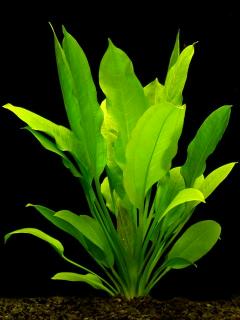| Amazon sword plant | |
|---|---|
 | |
| Echinodorus grisebachii. The plant is cultivated for and used in freshwater aquariums. The species is native to the Amazon Basin. | |
| Scientific classification | |
| Kingdom: | Plantae |
| Clade: | Tracheophytes |
| Clade: | Angiosperms |
| Clade: | Monocots |
| Order: | Alismatales |
| Family: | Alismataceae |
| Genus: | Echinodorus |
| Species: | E. grisebachii |
| Binomial name | |
| Echinodorus grisebachii Small in N.L.Britton & al. | |
| Synonyms [1] | |
| |
Echinodorus grisebachii or Echinodorus amazonicus is commonly known as Amazon sword plant, although other plants are also known under this common name. The aquatic plant is cultivated for and used in ponds and artificial aquatic habitats. It is native to Cuba, Central America, and South America as far south as Brazil and Bolivia. [1] It has been sold under the name Paniculatus.